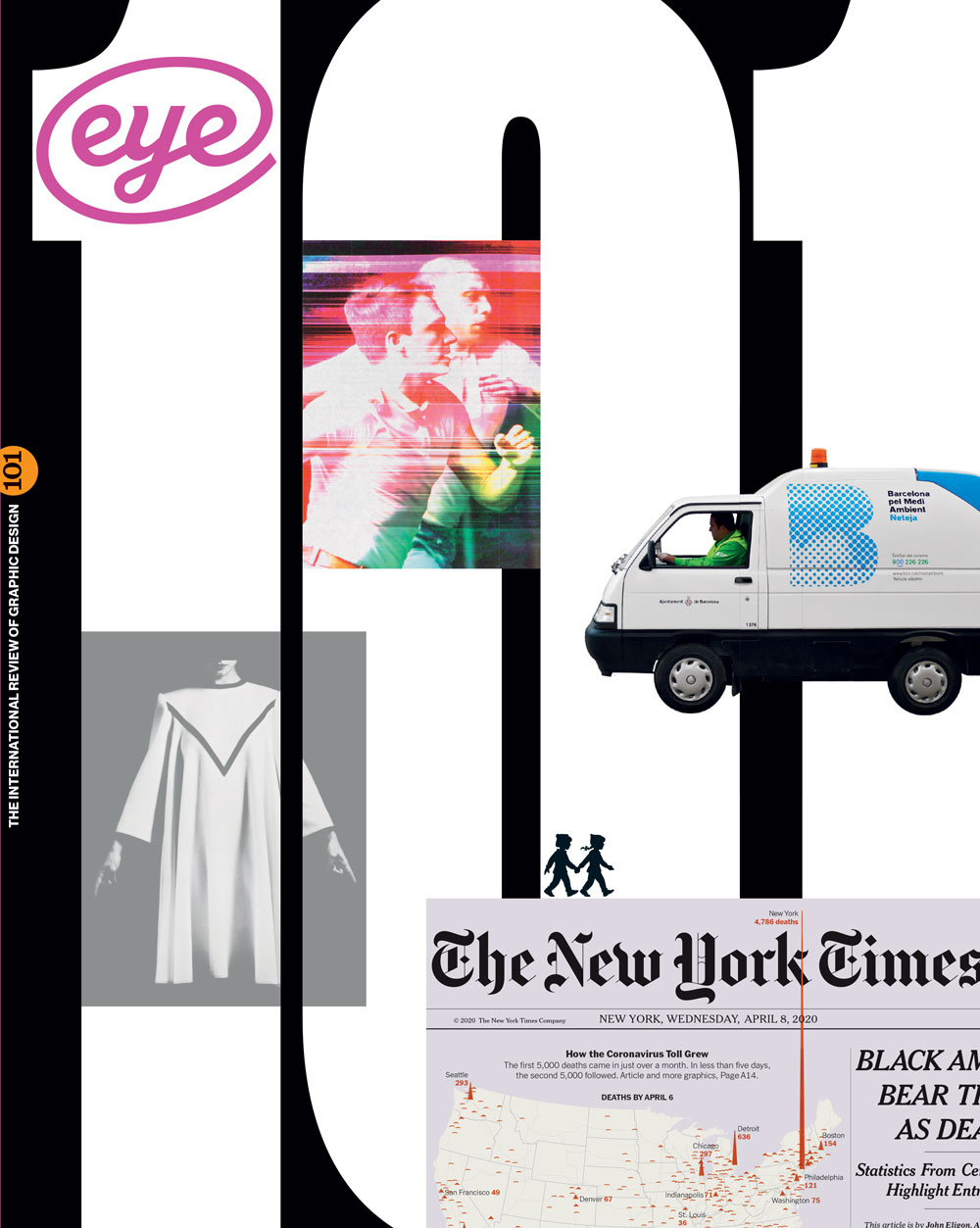Summer 2021
Mark Holt: Games, set and dispatch
The title page credit for Munich ’72: The Visual Output of Otl Aicher’s Dept XI reads ‘Researched, written, edited, designed and published by Mark Holt.’ Interview by John L. Walters

When Holt, a co-founder of 8vo and Octavo, began work on this extensive account of the design programme for the 1972 Olympics, he had little idea how time-consuming the project would become. After extensive research and preparation, he launched his Kickstarter campaign in March 2019 with a target of £76,750, and raised £84,657 in a month. Holt talked to Eye’s John L. Walters about the long path to publication.
Eye: Was this the first time you had tried crowdfunding?
Mark Holt: The Unit Editions book Octavo Redux (2017) gave me an insight, but I’d had no direct involvement in it. Munich ’72 was a leap in the dark. I got on and did it and then panicked that I’d set the pledge goal too high. But if the figure had not been that high I wouldn’t have been able to make the book. There was a lot of nail-biting.
Spreads from Munich ’72: The Visual Output of Otl Aicher’s Dept XI (2019) designed and edited by Mark Holt.

Did you get much advice?
Once the Kickstarter campaign was launched, Jesse Reed from Standards Manual said: ‘Nice campaign – but you need more pictures of spreads. People like to see the book.’ So I took his advice, updated the campaign and got an increased pick-up at that point.
It was hairy! Eight days from the end, I still needed £4000.
To first assess if the content existed to make the book I had planned, I had had to front £13,000 to 15,000 of my own money to do research trips and get many documents translated. When I did the maths and worked out that I needed £89,000 I decided not to include that amount – I was already out of pocket.
Projections and maths are all very well, but everybody who makes a book is fighting for the same share of the reader’s wallet. After your book’s been out five or six months another lovely new monograph comes out and you never know when sales will dry up and if you’ll make a profit from the remaining books.
Recently, I suddenly got 21 sales in three days. I discovered that there was a piece in the Munich daily newspaper Süddeutsche Zeitung, about it being Otl Aicher’s hundredth birthday in 2022, that mentioned the book. A chap who ordered it kindly sent me the article and I realised why I’d had the upturn.
Who else contacts you about the book?
It’s interesting getting the odd email from German people, especially in Munich and the surrounding areas, who have a family connection with the Olympics. They say things like: ‘My father worked there during the Games, he was one of the stewards.’ They want a book that tells the story. For them, it’s still a high-water mark culturally in Germany, and the book is something they want and treasure.
And designers?
From a graphic designer’s standpoint there is a healthy (or unhealthy) fascination with rational, systems-driven work. The Munich Olympics is often seen as this Germanic, rational, Ulm-inspired project, but I was trying to bring across its humanity.
And you make very clear, from the spine inwards, that this wasn’t just a ‘great man’ project.
The Munich ’72 Olympic Games had a vision, from the macro to the micro, that no other Games has managed to match. Everything and anything passed through Aicher’s Dept. XI. But a big problem in design is accreditation – who worked on what? The idea that one individual could strategise, sell the concept and deal with daily meetings and press activity, while designing logos and hundreds of outputs, is ludicrous.
I wanted to look through the prism of the 82 team members I discovered, ten of whom were senior project leaders, to see the project from their perspective. I write about ‘Gerhard Joksch’s sports posters’ and ‘Elena Winschermann’s Waldi mascot’. These people should be credited.
What advice do you have about doing a crowdfunded book? Are there things you might have done differently?
Keep the campaign short. Make the video short – mine was four minutes long – two minutes is better. And always include something of yourself, voice or image, to personalise the thing. Otherwise, who is it coming from? That’s important.
How do you think crowdfunding has changed publishing?
In the old days of Warhol and Interview magazine you got yourself a wealthy backer, I guess! Get somebody who wanted to help you and the problem was taken away. Real independence today comes from the empowerment of just doing it yourself. Which is inspiring and scary at the same time. The most frightening moment I had was when the full funds were wired to my bank account and I thought: ‘What happens if I now walk under a bus?’
Cover of Munich ’72: The Visual Output of Otl Aicher’s Dept XI (2019)

John L. Walters, editor of Eye, London
First published in Eye no. 101 vol. 26, 2021
Eye is the world’s most beautiful and collectable graphic design journal, published for professional designers, students and anyone interested in critical, informed writing about graphic design and visual culture. It is available from all good design bookshops and online at the Eye shop, where you can buy subscriptions and single issues.

